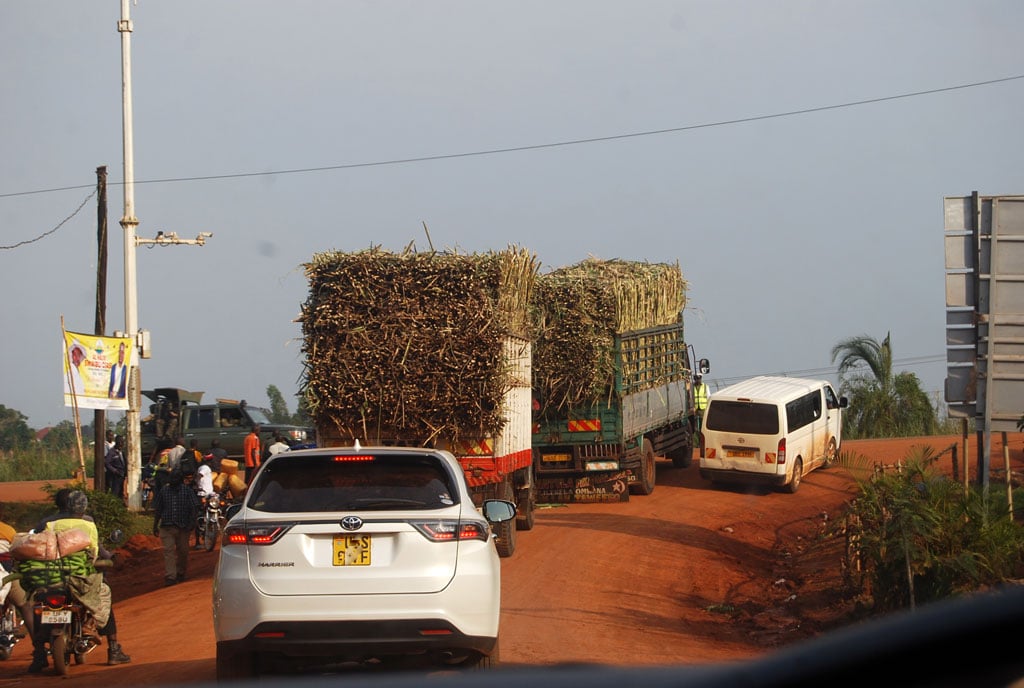Once a major coffee-producing region, Busoga in eastern Uganda has transitioned into a sugarcane-dominated economy. Despite the crop’s economic importance, poverty levels continue to rise, raising concerns among stakeholders and policymakers.
Poverty and Sugarcane Farming in Busoga
The UBOS 2024 Multidimensional Child Poverty Report ranks Busoga among Uganda’s poorest regions, with 33% of children experiencing multiple deprivations. Stakeholders attribute the sub-region’s worsening poverty to structural weaknesses in sugarcane farming.
Mr. Ibrahim Ndoga, spokesperson for the Busoga Lower Local Council’s Chairperson Association, linked Busoga’s poverty to the decline of industrial establishments that once provided stable employment. He noted that while Jinja was once Uganda’s industrial hub, the shift to sugarcane farming has led to a few operational factories that employ only a small workforce.
He added that many sugarcane workers hold low-paying, seasonal jobs, leaving them financially unstable. The limited opportunities force children to drop out of school, reducing the number of highly educated individuals who could qualify for better-paying jobs.
Farmers Struggle With Low Prices and Long Maturity Periods
Large-scale sugarcane farmer Godfrey Naitema blamed fluctuating prices for worsening financial struggles. He compared Uganda’s situation to Tanzania and the Netherlands, where minimum price policies help stabilize farmer incomes. In December 2023, the price of a tonne of sugarcane ranged from Shs110,000 to Shs240,000, making it difficult for farmers to cover production costs.
Former Bugabula South parliamentary aspirant Pastor Andrew Muwanguzi pointed out that food shortages have worsened in Busoga because most land is dedicated to sugarcane instead of food crops. He also emphasized that sugarcane’s 18-month maturity period creates financial hardship, as farmers often spend their first harvest earnings repaying loans and covering production costs.
Debate Over Sugarcane’s Role in Busoga’s Poverty
Not all stakeholders attribute Busoga’s poverty solely to sugarcane farming. Mr. Isa Budhugo, chairperson of the Uganda National Sugarcane Growers Association, argued that subsistence farming also contributes to the sub-region’s struggles. He noted that Busoga has 2.4 million acres of land, with only 200,000 acres used for sugarcane farming. He questioned why other land remains idle while many youth engage in boda boda riding, leaving elderly parents dependent on rain-fed agriculture with limited access to fertilizers.
Ms. Florence Mutyabule, Senior Presidential Advisor on Poverty Alleviation for Busoga Sub-region, acknowledged that oversupply has led to falling sugarcane prices, worsening financial difficulties.
Millers Call for Better Farming Practices
The Uganda Sugar Manufacturers Association (USMA), represented by Chairperson Jim Kabeho, advised farmers to improve farming techniques to increase productivity. He pointed out that farmers currently harvest 30 tonnes per acre instead of the standard 60 tonnes.
Kabeho urged farmers to avoid harvesting immature cane, as it reduces output and profitability. He also revealed plans to establish the Uganda Sugar Industry Stakeholders Council under the new Sugar (Amendments) Bill 2023, which aims to introduce regulatory reforms.
President Museveni’s Position on Sugarcane Farming
During a recent visit to Busoga, President Yoweri Museveni expressed skepticism about small-scale sugarcane farming as a means to lift people out of poverty. He emphasized that only large-scale production could be profitable, adding that processors benefit most from sugarcane by extracting biogas, molasses, and other byproducts beyond just sugar.
Museveni pledged government support for building sugarcane factories that promote value addition, ensuring farmers earn more from their produce.
Busoga’s Role in Uganda’s Sugar Industry
A 2021 Economic Policy Research Centre (EPRC) study found that Busoga has Uganda’s largest sugarcane milling capacity (35%), followed by:
- Central Uganda – 27%
- Western Uganda – 26%
- Northern Uganda – 12%
The sub-region houses seven major sugar factories, including:
- Kakira Sugar Works (Jinja)
- Mayuge Sugar Factory (Mayuge)
- Kamuli Sugar Ltd (Kamuli)
- Sugar Allied Industries (Kaliro)
- GM Sugar Factory (Buikwe)
- Bugiri Sugar Ltd (Bugiri)
- CN Sugar Factory (Namayingo – under construction)
Balancing Sugarcane Farming and Poverty Reduction
Busoga’s dependence on sugarcane as a cash crop has not translated into economic prosperity. While some blame low prices, land misallocation, and lack of minimum price policies, others highlight the absence of industrial diversification and limited government support for farmers.
Going forward, stakeholders agree that value addition, better farming techniques, and policy reforms are essential to reducing poverty in Busoga while maintaining its position as Uganda’s sugar hub.
